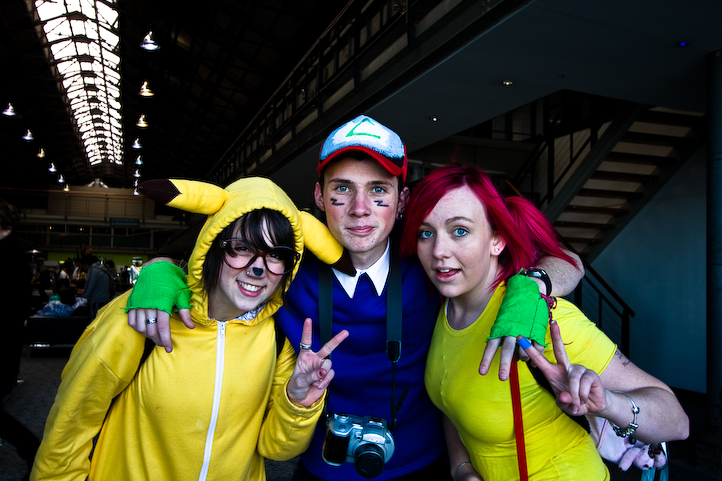Killing the creative for fanservice
The artistic process is restricted when the only voices heard are those of the dissatisfied
By Jocelyn Beaudet
Everybody’s a critic when it comes to our favorite TV shows, movies, comics and even novels. Databases like IMDB and animedb are flooded with user reviews, ranging from a few words to several paragraphs; all this to say that fans have a voice.
The disturbing trend however, is that this voice has now begun shaping our sequels, new episodes and latest issues — in many cases fans are now influencing the development of the media we consume. This is a problem, and a very big one at that.
There’s a very clear breach of artistic vision being perpetrated by having fans actively alter the course of someone else’s ideas for the sake of retaining revenue from the source.
While some artists have made some decidedly questionable choices in the direction of their work — the Star Wars prequels for example — having fans directly involved in the process diminishes the value that these artists have in the expression and production of their material.
The result is having a project marred by a vocal minority, rather than pleasing a silent majority — people who don’t feel the need to change the direction of any particular piece of art will continue to sit by and consume it without a peep.
What would the “Mona Lisa” look like if everyone had their say? Where would the incredible Spiderman be if fans decided where Peter Parker ended up? How different would Lord of the Rings be if fans had a say in the direction?
Questions like these speak for themselves and easily make up one of the reasons to leave fans outside of the creative process. Whether it’s classic paintings, cult followed comic books, epic novels, or amazing TV series, these forms of media require tremendous amounts of work, and carefully calculated budgets, something that fans seldom consider when pitching their ideas for these changes.
Advent Children, a Final Fantasy movie made for fans, reinforces the point itself. The movie grossed terribly at the box office, and viewers not familiar with the franchise found themselves confused and simply taking in the sights.
While the movie did its best to accommodate a new audience, and was by no means a horrible experience, it failed to capture the same whimsy that those who enjoyed the original game had felt. The experience felt shallow, and some fans even found themselves unmoved by something so deliberately crafted by and for one another.
The artistic process is sacred, and while fans are definitely capable of wonderful, creative ideas, these are diamonds in the rough, buried in a sea of horrible fanfiction that should remain in the darker corners of the Internet.
The fandom — A force too hard to ignore
The fans have spoken: we want in on the creative action
By Saturn De Los Angeles
The development of the creative process in contemporary art can stagnate and even stay dry without the participation of fans in some form. They establish a community who not only rally and support the artists, but also help in pushing the boundaries of creativity.
Art is seen as an outlet of expression, whether that be a movie, a series, a video game, a song or even a comic book. It can pose a statement, provoke an emotion, or even prompt a call to action.
When people encounter a creative work and like it, they reach out to others who share the same interests. Some fans may even pursue activities to express that appreciation, including fan art, cosplay, creative fiction, and a variety of social events. This leads to the creation of communities that go beyond geographical boundaries.
This may just be how fan-run anime conventions began to take shape over the past several decades, and within these congregations, creative people like voice actors, illustrators and musicians are noticed by production studios.
Free! Iwatobi Swim Club is a slice-of-life anime about a group of high school students who collectively want to start a swimming club. In early 2013, a brief clip of what would become the show was leaked on social media. The clip went viral in a short time for its ubiquitous content – attractively built guys with amazing hair and oddly effeminate names.
The clip turned heads and provoked buzz by online fans. The buzz prompted Kyoto Animation, a production studio in Japan known for producing stellar animated work such as The Melancholy of Haruhi Suzumiya and Lucky Star, to develop and broadcast a 12-episode television series based on the clip.
Hitting a little closer to home, the podcast “Welcome to Night Vale,” produced by Commonplace Books in New York, is also a show that has developed a loyal online following in a short time. The comedy series about the small creepy desert town as told from a community radio host became a runaway hit, combining humour and a sly dash of social commentary.
The successful series is now reeling with a potential spinoff literary novel in the works. The podcast has also provoked complex and, at times, intense online discussion that intersects gender, sexual orientation, race and representation.
These two examples are a few of many instances of how dedicated and involved these fandoms can be in expressing their appreciation, distaste or criticism for a piece of creative work.
Indeed, fans are the driving force for contemporary art. Fandom may not yet be the most efficient machine, but it is something that we cannot just set aside. They are as important as the artists themselves in keeping the stream of creativity going.
[polldaddy poll=7732289]
